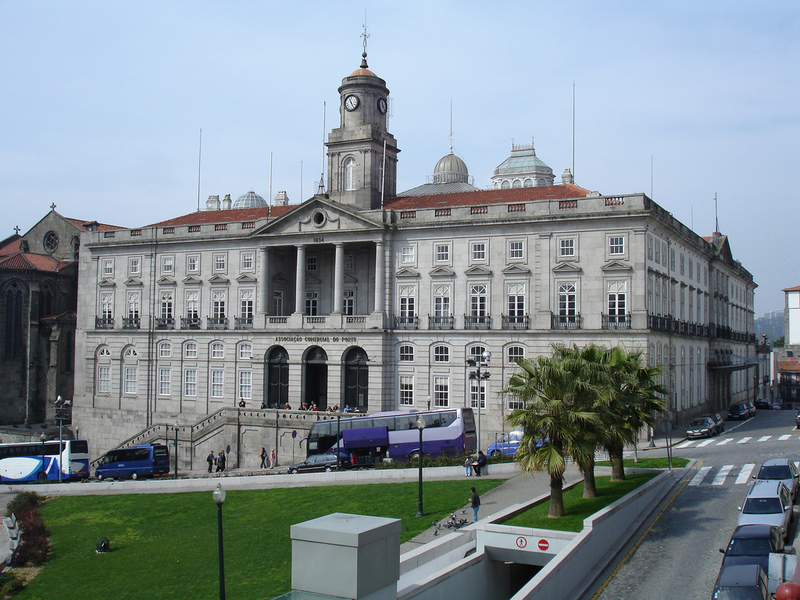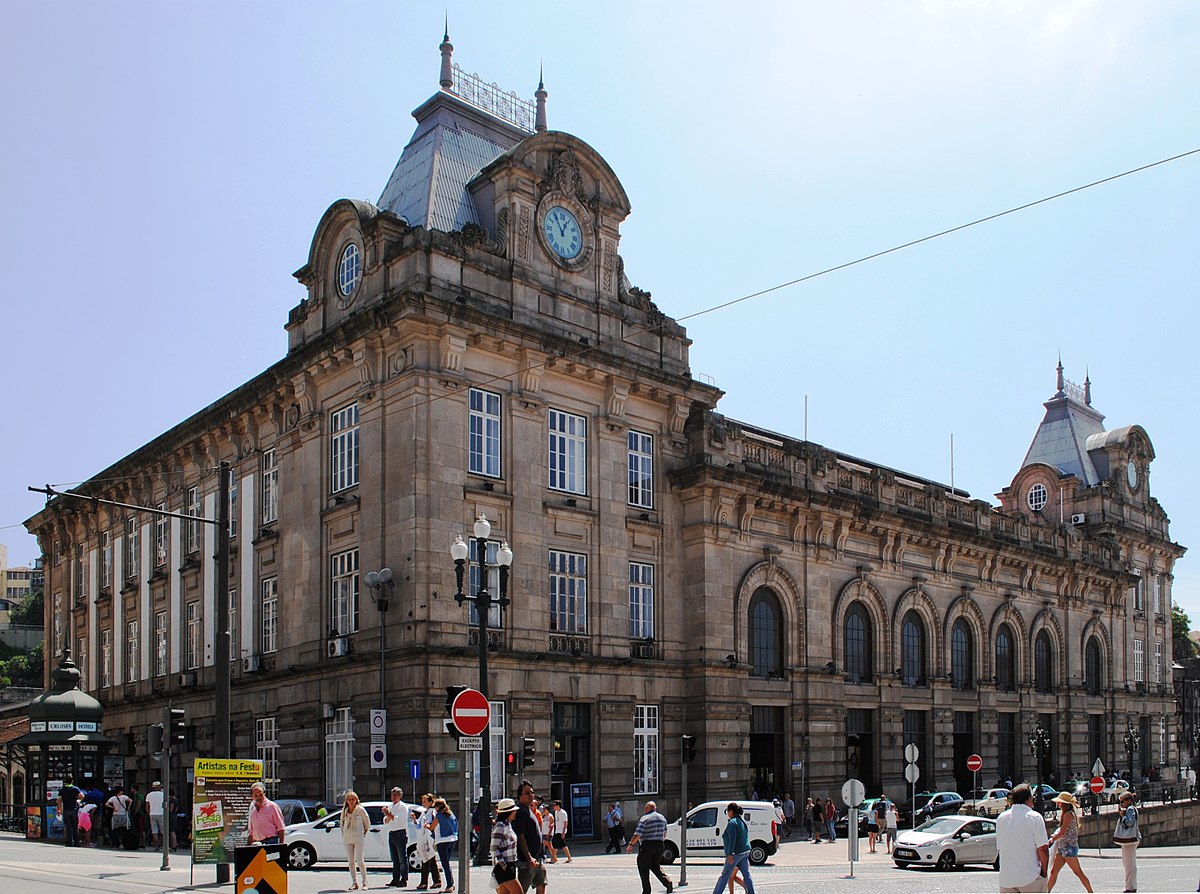
Palácio da Bolsa
Free app for self-guided walking tours. Tap locations on the map to load real historical stories in the app.







This area covers Baixa do Porto and traces how medieval civic and ecclesiastical power organized the hilltop and riverfront for administration, worship, and trade.
In the 18th and 19th centuries, Douro commerce and port‑wine distribution expanded, and customs and warehousing concentrated along the quay, exemplified by Alfândega Nova do Porto. By the late 19th century, public works modernized mobility with rail links, tunnels, and new streets, integrating the center more tightly with regional markets. In the early to mid‑20th century, cafés, cinemas, and newsrooms shaped public life and debate, while business associations coordinated urban retail and services. In later decades, deindustrialization prompted building reuse, cultural institutions, and preservation projects, seen in the conversion of the former prison into the Centro Português de Fotografia and the renewal of downtown storefronts.

On 29 March 1809 at Porto’s Ponte das Barcas, near today’s Ponte Luiz I, crowds of civilians and soldiers fleeing General Soult caused the pontoon bridge to collapse, drowning thousands; the disaster pushed authorities to build safer river crossings, culminating in the Dom Luís I Bridge (1881–1886) by Théophile Seyrig.

In 1892 at Estação de São Bento’s site, authorities demolished the 16th‑century Convent of São Bento da Avé Maria after the last nun died and secularization laws dissolved the order. Work on the new central station followed in the 1890s, with King Carlos I laying a cornerstone and the rail hub opening in 1916, shifting the site from monastic enclosure to urban transport.

In 1387 at Sé do Porto, King John I of Portugal married Philippa of Lancaster to secure an English alliance; the union led to the Treaty of Windsor and long‑term military and trade cooperation.

In 1881 at the future Livraria Lello & Irmão site, French bookseller Ernesto Chardron used lottery winnings to expand a combined publishing and bookselling house that issued works by Eça de Queirós and Camilo Castelo Branco; the Lello brothers’ 1906 takeover carried his catalog and model into a new venue.

Palácio da Bolsa
Click on any location below to find it on the map and discover more about the neighborhood.
Storydex uses AI to create historical stories based on multiple sources, with citations for further exploration. While we strive for accuracy, please verify important details. We're always improving, so if you spot an error or have feedback, let us know!